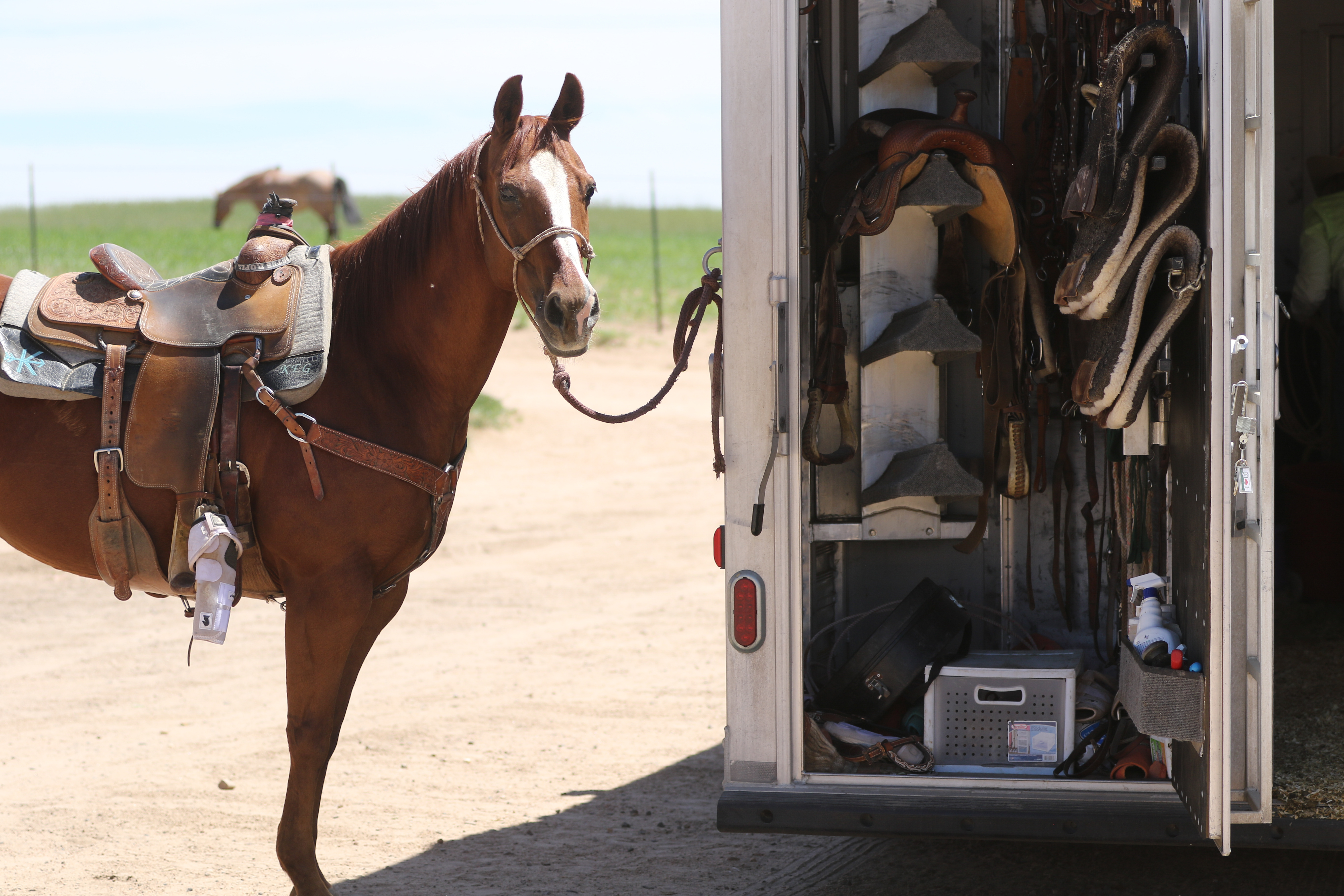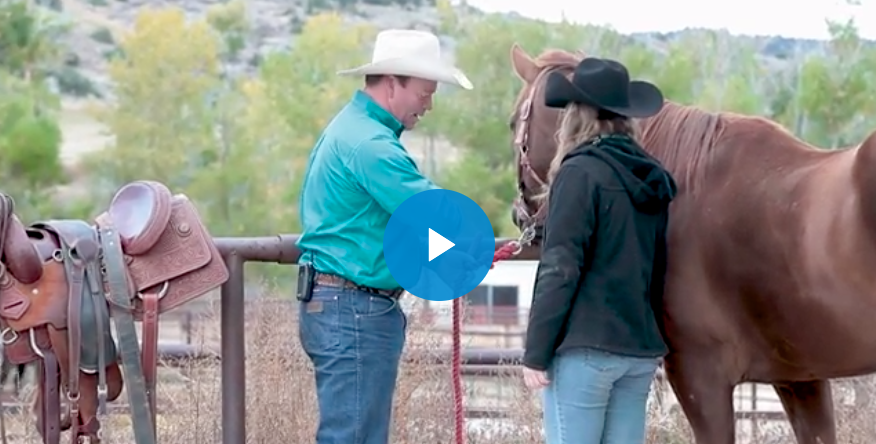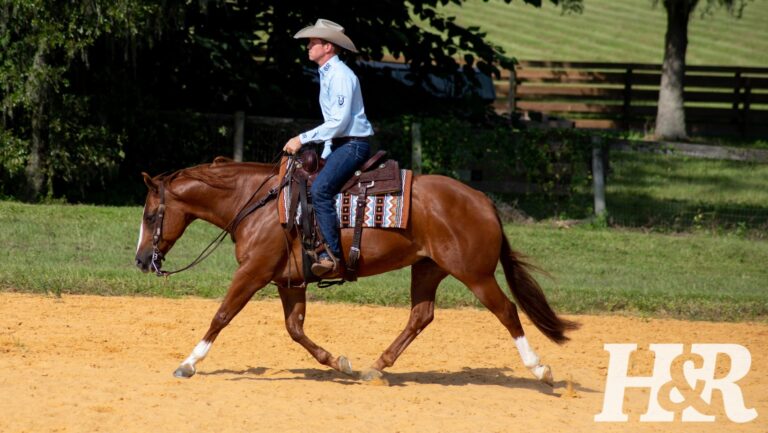Tying a horse properly is a horsemanship basic, but there’s more to it than meets the casual eye. Here, we offer some of the most important tips on how to do it and what to avoid.

Do use a long enough rope (8 to 10 feet is standard) in good repair. An all-cotton rope may be easier on your hands, as synthetic ropes “burn” more when drawn rapidly across skin.
Do choose an appropriate place to tie, away from other horses and temptations such as food sources.
Don’t tie to anything your horse can move or dislodge if he were to become frightened and pull back. Choose a well-set fence post over a fence rail, as the latter can pull loose or break.
Don’t tie so short your horse feels claustrophobic, or so long that the rope hangs down where it could entangle a leg. A good mnemonic for both height and length is “Eye high and arm’s length.”
Do use a quick-release knot that will come loose with a pull in the event of an emergency. As an alternative to a quick-release knot, a Blocker tie ring secures your horse without the need to tie him fast (blockerranch.com).
Don’t ever use the bridle reins to tie your horse, or a lead that’s snapped to the bridle’s bit. If your horse were to pull back, he could do serious damage to his mouth.







